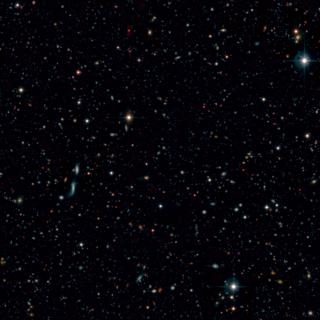Bibcode
Bongiovanni, Ángel; Ramón-Pérez, Marina; Pérez García, Ana María; Cerviño, Miguel; Cepa, Jordi; Nadolny, Jakub; Pérez Martínez, Ricardo; Alfaro, Emilio J.; Castañeda, Héctor O.; Cedrés, Bernabé; de Diego, José A.; Ederoclite, Alessandro; Fernández-Lorenzo, Mirian; Gallego, Jesús; de Jesús González, José; González-Serrano, José Ignacio; Lara-López, Maritza A.; Oteo Gómez, Iván; Padilla Torres, Carmen P.; Pintos-Castro, Irene; Pović, Mirjana; Sánchez-Portal, Miguel; Heath Jones, D.; Bland-Hawthorn, Joss; Cabrera-Lavers, Antonio
Bibliographical reference
Astronomy and Astrophysics
Advertised on:
3
2020
Journal
Citations
7
Refereed citations
7
Description
Context. The OSIRIS Tunable Filter Emission Line Object (OTELO) survey is a very deep, blind exploration of a selected region of the Extended Groth Strip and is designed for finding emission-line sources (ELSs). The survey design, observations, data reduction, astrometry, and photometry, as well as the correlation with ancillary data used to obtain a final catalogue, including photo-z estimates and a preliminary selection of ELS, were described in a previous contribution.
Aims: Here, we aim to determine the main properties and luminosity function (LF) of the [O III] ELS sample of OTELO as a scientific demonstration of its capabilities, advantages, and complementarity with respect to other surveys.
Methods: The selection and analysis procedures of ELS candidates obtained using tunable filter pseudo-spectra are described. We performed simulations in the parameter space of the survey to obtain emission-line detection probabilities. Relevant characteristics of [O III] emitters and the LF ([O III]), including the main selection biases and uncertainties, are presented.
Results: From 541 preliminary emission-line source candidates selected around z = 0.8, a total of 184 sources were confirmed as [O III] emitters. Consistent with simulations, the minimum detectable line flux and equivalent width in this ELS sample are ∼5 × 10-19 erg s-1 cm2 and ∼6 Å, respectively. We are able to constrain the faint-end slope (α = -1.03 ± 0.08) of the observed LF ([O III]) at a mean redshift of z = 0.83. This LF reaches values that are approximately ten times lower than those from other surveys. The vast majority (84%) of the morphologically classified [O III] ELSs are disc-like sources, and 87% of this sample is comprised of galaxies with stellar masses of M⋆ < 1010 M☉.
Aims: Here, we aim to determine the main properties and luminosity function (LF) of the [O III] ELS sample of OTELO as a scientific demonstration of its capabilities, advantages, and complementarity with respect to other surveys.
Methods: The selection and analysis procedures of ELS candidates obtained using tunable filter pseudo-spectra are described. We performed simulations in the parameter space of the survey to obtain emission-line detection probabilities. Relevant characteristics of [O III] emitters and the LF ([O III]), including the main selection biases and uncertainties, are presented.
Results: From 541 preliminary emission-line source candidates selected around z = 0.8, a total of 184 sources were confirmed as [O III] emitters. Consistent with simulations, the minimum detectable line flux and equivalent width in this ELS sample are ∼5 × 10-19 erg s-1 cm2 and ∼6 Å, respectively. We are able to constrain the faint-end slope (α = -1.03 ± 0.08) of the observed LF ([O III]) at a mean redshift of z = 0.83. This LF reaches values that are approximately ten times lower than those from other surveys. The vast majority (84%) of the morphologically classified [O III] ELSs are disc-like sources, and 87% of this sample is comprised of galaxies with stellar masses of M⋆ < 1010 M☉.
Related projects

Evolution of Galaxies
Galaxy evolution is a crucial topic in modern extragalactic astrophysics, linking cosmology to the Local Universe. Their study requires collecting statistically significant samples of galaxies of different luminosities at different distances. It implies the ability to observe faint objects using different techniques, and at different wavelengths
Jorge
Cepa Nogue